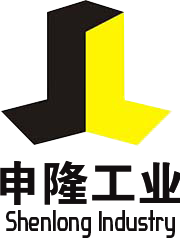Application of Signal Plate
Signal plates are thin sheets of metal or plastic that are used in a variety of applications, including:
Electrical and electronic systems: Signal plates can be used as circuit boards to transmit electrical signals between components. They are often made of copper, aluminum, or other conductive materials and can be etched with a pattern to create a specific circuit.
Industrial automation: Signal plates can be used as a means of identifying and tracking products on a manufacturing line. They may be used to convey information about the product, such as its size, weight, or destination.
Automotive and transportation: Signal plates can be used as identification tags for vehicles, including cars, trucks, and airplanes. They may be used to convey information about the make, model, year, and other specifications of the vehicle.
Security and access control: Signal plates can be used as identification badges for employees or visitors in a facility. They may include a photograph of the person, along with their name, job title, and other information.
Medical devices: Signal plates can be used as part of medical devices, including sensors and monitoring systems. They may be used to transmit information about a patient's vital signs, such as heart rate and blood pressure.
Overall, signal plates are versatile and can be used in a wide variety of applications that require the transmission of information or signals between components. They are often lightweight and durable, making them a good choice for applications where weight and space are at a premium.
Advantages of Signal Plate
Signal plates have a number of advantages in various applications, including:
Versatility: Signal plates can be used in a wide variety of applications, from electronics to transportation to medical devices. They can be customized to fit the needs of a particular application and can be made from a range of materials, such as metal, plastic, or composite materials.
Durability: Signal plates are often made of materials that are resistant to wear and tear, such as aluminum or stainless steel. This makes them ideal for use in harsh environments or in applications where they will be exposed to frequent use or handling.
Lightweight: Signal plates are often lightweight, which makes them ideal for use in applications where weight is a concern, such as in aerospace or automotive applications. The use of lightweight signal plates can help to reduce fuel consumption and increase efficiency.
Customizable: Signal plates can be customized to fit the needs of a particular application. This includes the size, shape, and thickness of the plate, as well as the pattern or information that is etched onto the plate.
Cost-effective: Signal plates are often a cost-effective solution for transmitting information or signals between components. They can be mass-produced, which can help to reduce the cost per unit, and they require minimal maintenance or upkeep.
Overall, the advantages of signal plates make them a popular choice in a variety of industries and applications. Their durability, versatility, and customizability make them an ideal solution for transmitting information or signals between components.


 CN
CN EN
EN








